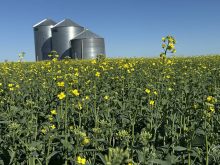It’s shaping up to be a sweet year for beekeepers on the Prairies for their honey harvest. There is also some hope that prices for white honey will improve.
Manitoba is expecting above average honey production, and Saskatchewan and Alberta will be at least average.
“I think it will be average, it might even be better,” said John Gruszka, provincial apiculturist in Saskatchewan, describing the honey harvest in his province.
“I haven’t heard from anybody complaining that they’ve had a poor crop.”
The final tally of prairie honey production won’t be available until late October. Beekeepers will be surveyed between now and then to get a more accurate assessment of what their colonies produced this year.
Read Also

Huge Black Sea flax crop to provide stiff competition
Russia and Kazakhstan harvested huge flax crops and will be providing stiff competition in China and the EU.
However, Manitoba provincial apiarist Rhéal Lafreniere is already confident that honey production in his province will surpass the long-term average.
“I think we’re pretty confident that we’ve got at least 185 pounds (per colony) as an average right now. It may go up by 10 lb. It may even go up by 20 lb.”
In Alberta, beekeepers generally have enjoyed a “very good harvest,” particularly in the northern part of the province, said Heather Clay, national co-ordinator of the Canadian Honey Council. There are reports of beekeepers in northern Alberta harvesting more than 300 lb. per colony, she said, but that will be offset somewhat by yields that were not as good in the south.
“Overall, I think we’ll be slightly above average,” she said of Alberta’s harvest. “Some producers had a great year.
“There was really good weather and the alfalfa bloomed for a long time so they had a longer nectar flow than usual. They’ve really been able to capitalize on that.”
Gruszka said prices for bulk honey last year were below producers’ costs of production. However, he said prices could improve, partly because severe weather hampered honey production in China and partly because of the toll a hot, dry summer took on honey production in the United States.
“We already know that the (U.S.) Midwest is going to have a poor crop. They’re essentially the white honey producers for the U.S. If they’ve had a short crop, then our honey’s going to be that much more valuable, I think.”
Consumption of honey in China has also increased, he said, because people are using it to replace sugar, which has risen in price.
“We’re starting to hear from around the world that there may be a shortage of white honey, so we are anticipating some price movement,” Gruszka said.
“We’ll see where that takes us.”
















